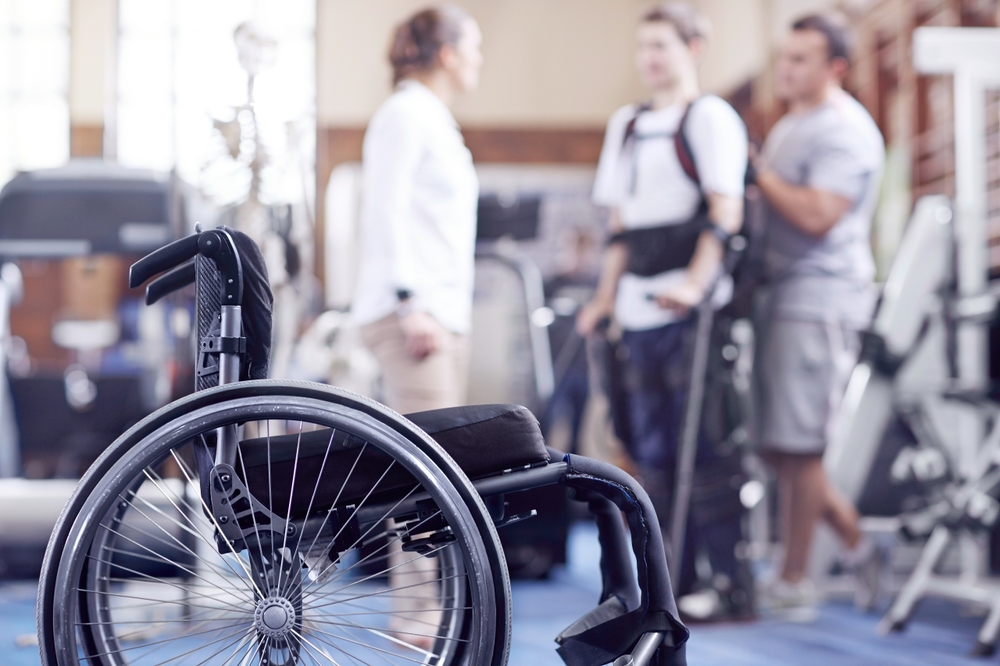Recovering from a spinal cord injury is one of the most challenging journeys an individual and their family can face. Whether the injury has led to partial or complete paralysis, the road ahead often includes physical, emotional, and financial hurdles.
Beyond medical treatment, many individuals require daily caregiving support, an expense that adds up quickly. Legal claims may help recover compensation to pay for these essential services, easing the burden on you and your loved ones. Our New York spinal cord injury lawyer today for free consultation.
Schedule a Free Case Evaluation
Life at Home After a Spinal Cord Injury
Returning home after inpatient care marks the beginning of a new chapter. It is common to feel both relieved and anxious as routines shift. Ensuring comfort, safety, and independence is mandatory.
- Review the home layout for accessibility and potential hazards.
- Discuss ongoing needs with the injured person to create a plan that respects their preferences and privacy.
- Build daily routines that foster independence, including time for hobbies or interests that boost confidence.
- Maintain open communication among family members, caregivers, and healthcare providers.
Setting up your home for accessibility
Most people with a spinal cord injury need modifications to maximize independence and safety at home. Carefully assess all living spaces to remove barriers to mobility.

- Install sturdy ramps at entrances and ensure walkways are smooth.
- Widen door frames and remove area rugs or unnecessary furniture to accommodate wheelchairs or walkers.
- Place commonly used items within easy reach, including kitchenware, toiletries, and electronics.
- Invest in adaptive tools such as reachers, transfer benches, and adjustable beds.
Upgrade lighting and consider installing visual or vibrating alarms for those with sensory impairments.
Hiring the right caregiving support
Caregivers play a vital role in daily comfort and recovery. Whether you’re hiring outside help or supporting a loved one yourself, consider these needs:
- Evaluate the level of care required some may only need part-time help, while others need around-the-clock assistance.
- Screen potential caregivers for relevant experience and background in spinal cord injury care.
- Ask candidates about their training in wound prevention, range-of-motion exercises, and emergency protocols.
- Create clear guidelines for tasks like medication management, hygiene routines, and transferring.
Encourage feedback and open discussion about duties to minimize stress or misunderstandings.
Adjusting to a New Normal Physically and Emotionally
Both injured individuals and their families face significant emotional changes. Recovery is not only about physical progress but also adapting to a new way of life.
- Schedule regular appointments with rehabilitation professionals to set and assess goals.
- Seek out peer mentors or support groups — connecting with others who have had similar experiences often provides encouragement and advice.
- Explore telehealth counseling or therapy for emotional well-being, especially during challenging transitions.
- Encourage hobbies, recreational activities, adaptive sports, or creative outlets to promote mental health.
Progress, however incremental, supports dignity and hope.
Types of Spinal Cord Injury and Long-Term Needs
Spinal cord injuries range widely in severity and impact. Knowing the differences helps tailor caregiving plans and anticipate future needs.
- Complete injuries often result in loss of sensation and movement below the site of injury; incomplete injuries preserve varying degrees of function.
- Tetraplegia (also called quadriplegia) affects all four limbs, while paraplegia involves only the lower body.
- Each injury level (cervical, thoracic, lumbar, sacral) brings unique challenges for mobility, breathing, bladder and bowel management, and self-care.
- Long-term complications may include pressure sores, respiratory problems, muscle spasticity, chronic pain, and secondary infections.
Common challenges after a spinal cord injury:
- Managing muscle spasms and secondary pain through medications, therapy, and adaptive equipment.
- Preventing pressure ulcers (bedsores) with frequent position changes and specialized cushions or mattresses.
- Establishing routines for bowel and bladder care to avoid medical emergencies.
- Communicating needs clearly to caregivers and medical professionals.
Types of Compensation That Cover Caregiving Costs
Medical bills, ongoing care, and disability-related expenses quickly add up. Legal claims hold negligent parties accountable and provide financial relief for individuals and families.
Medical expenses
A personal injury claim includes direct costs incurred as a result of the spinal cord injury:
- Emergency transport and acute care at the hospital.
- Surgical interventions and hospitalization.
- Inpatient and outpatient rehabilitation services.
- Follow-up visits, medication, imaging studies, or procedures related to secondary complications.
- Adaptive devices like power wheelchairs, pressure relief cushions, and hospital beds.
Caregiving and attendant care
Help with daily living tasks is often the most expensive long-term need, but it is crucial for comfort and quality of life.
- Professional in-home attendants deliver daily hands-on care and ensure medical routines are followed.
- Family members who become full- or part-time caregivers might require financial compensation for lost income.
- Some families hire personal care aides to provide specialized support, such as catheter care or mobility training.
- Temporary help for respite care allows primary caregivers to rest and prevent burnout.
Lost wages and reduced earning capacity
The impact of a spinal cord injury extends to employment:

- The injured individual may not return to work for months, years, or may never be able to work again in the same capacity.
- Caregivers who reduce work hours or leave jobs to provide care experience significant financial setbacks.
- Legal claims address these losses through both past lost wages and diminished future earning potential.
Pain, suffering, and lifestyle adjustments
The effects of a spinal cord injury reach far beyond physical limitations.
- Loss of the ability to participate in valued activities or hobbies.
- Social isolation stemming from physical barriers or emotional distress.
- Compromised relationships due to new family dynamics and the strain of caregiving responsibilities.
- Compensation may cover counseling or therapy to restore emotional well-being.
Long-term planning and financial security
Beyond immediate needs, families impacted by a spinal cord injury benefit from planning ahead:
- Explore government benefit programs, such as Social Security Disability Insurance (SSDI) or Medicaid.
- Consider trusts or financial plans structured to protect assets while maintaining necessary benefits.
- Work with a financial advisor to allocate any legal settlement or award for long-term security, including funds set aside for attendant care.
- Review insurance options to cover in-home care, home modifications, transportation, and adaptive equipment.
Steps to Take for Legal Action
Legal action gives your family the resources to pay for current and future care. Approach each step thoughtfully:
Gather documentation
Building a strong case means collecting complete and organized evidence:
- Track all expenses with receipts, bills, and payments related to care.
- Take photos of injuries, the home setup, and adaptive equipment.
- Document how your day-to-day life has changed, including time spent giving care and adjustments to routines.
- Collect correspondence with insurance companies and employers regarding benefits, denials, or leave.
Consult a personal injury lawyer
A personal injury lawyer with experience in spinal cord injury litigation guides families through every aspect of the claim process.
- Research and consult firms that have documented success with spinal cord injury claims or serious personal injury cases.
- Bring all records, notes, and documentation to your first meeting.
- Discuss possible types of compensation, and get clear estimates for timelines and expected steps.
Avoid Common Settlement Pitfalls
Insurance companies rarely offer full value in their first settlement proposals.
- Seek a second opinion from a legal professional before responding to settlement offers.
- Ask for detailed breakdowns of how offer amounts were calculated, including provisions for long-term care.
- Do not sign waivers or releases without legal counsel review.
- Keep a detailed journal—written or video—tracking ongoing challenges and care needs to support your claim’s validity.
Community Resources and Ongoing Support
Most families benefit greatly from outside help as they adjust and acquire new caregiving skills.
- Investigate local and national spinal cord injury associations for support groups, education, and advocacy.
- Many nonprofit organizations offer free or discounted equipment and home modification grants.
- Local agencies may coordinate peer mentorships, provide respite care, or connect you with social workers.
Accessible Transportation and Mobility Solutions
Getting around remains one of the most significant challenges after a spinal cord injury, yet it is necessary for maintaining a full life.
- Review paratransit services and accessible public transportation options in your area.
- Explore grants or insurance funding for a wheelchair-accessible vehicle.
- Install vehicle adaptations such as hand controls, lifts, or tie-downs for safe travel.
- Sign up with ride services that specialize in mobility needs, allowing independence without placing extra burden on caregivers.
Rehabilitation and Adaptive Activities
Rehabilitation continues far beyond hospitalization and is vital for both physical progress and mental wellness.
- Outpatient physical and occupational therapy sessions help restore movement and build adaptation skills.
- Adaptive sports, art programs, or vocational training enhance quality of life and foster new talents or friendships.
- Many rehabilitation centers offer group outings and community reintegration workshops.
Practical Tips for Caregivers
Providing care for someone who has survived a spinal cord injury involves balancing many moving parts. These tips can help maintain energy and morale over the long haul.
Scheduling regular breaks
- Plan for routine days off or short daily breaks to rest and recharge.
- Connect with other caregivers for advice and sharing responsibilities.
- Use online or in-person respite services, especially during periods of high stress.
Using technology to stay organized
- Schedule and track appointments, medications, and therapies with dedicated apps.
- Create reminders for routine skin checks, positioning, and personal care tasks.
- Use video calls to coordinate with therapists and doctors, reducing travel stress.
Prioritizing your own health
- Schedule your own medical appointments and treatments.
- Include relaxing rituals, such as reading, gentle exercise, or meditation, in your daily schedule.
- Reach out for support groups that offer family and caregiver resources.
FAQs About Personal Injury Cases and Spinal Cord Injuries
How much does it cost to hire a personal injury lawyer?
- Most lawyers offer free consultations and work on contingency fees. Legal fees are usually a percentage of any recovery, so you do not pay unless you win compensation.
How long does a legal claim take?
- The length of a personal injury case depends on the facts, amount of documentation, and willingness of all parties to settle or proceed to trial.
- Complex spinal cord injury claims may take months or even several years, but legal teams strive to prevent unnecessary delays.
Can legal claims cover all caregiving costs?
- Settlements and verdicts frequently include compensation for both past and future attendant care.
- Discuss lifetime needs with your legal team and make sure long-term care provisions are clearly estimated in your demands.
How do I know if I qualify for a legal claim?
- If your spinal cord injury was the result of another party’s negligence—such as a car accident, fall, medical error, or unsafe premises—you likely have grounds for a claim.
- A personal injury lawyer can review your records and help determine eligibility.
What is the process for getting compensation for home modifications or adaptive equipment?
- Collect all receipts and quotes for items like ramps, beds, lifts, and bathroom renovations.
- Submit this documentation to your attorney, who can include it as part of your claim.
- Some insurance policies or government benefit programs will cover partial costs, so explore all avenues.
Securing a Future That Works for You
Every spinal cord injury is unique, but you do not have to face this transition alone. Investing in home accessibility, hiring qualified attendants, learning about adaptive tools, and pursuing personal injury claims that recover compensation for the cost of caregiving builds a family's foundation for the future.

Resources, technology, community support, and legal representation all contribute to the movement toward independence, hope, and financial security.
If you’re ready to explore legal options or discover how a settlement can help secure care for yourself or a loved one, contact our New York personal injury lawyer at Queller Fisher, trusted advocates for personal injury cases in New York.
The team is prepared to help you seek compensation and chart a path toward the best possible life in the wake of a spinal cord injury. Call Queller Fisher at 212-406-1700 to schedule your free, no-obligation consultation today.